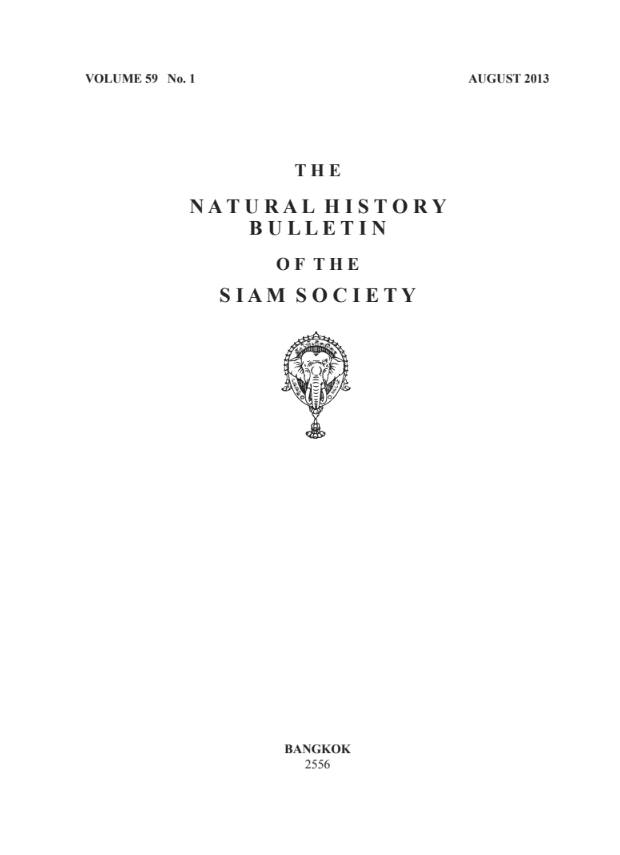Composition, Structure and Spatial Patterns of the Tree Community in a Fire-influenced, Deciduous Dipterocarp-oak Forest, Western Thailand
Main Article Content
Abstract
We present a quantitative description of the composition and structure of the tree community in a fire-influenced seasonal dipterocarp-oak forest with grassland in a 4-ha (200 × 200 m) plot in Thung Yai Naresuan Wildlife Sanctuary, Thailand. A total of 86 woody species with stems ≥5 cm dbh were encountered. The plot was subdivided into closed-canopy forest and grassland sections based on the tree distributions, canopy openness estimates, and cover of graminoids. The tree canopy was strongly dominated by Shorea siamensis var. siamensis, and Quercus kerrii var. kerrii, and the subcanopy strata dominated by Cycas pectinata and Aporosa villosa. Tree basal area was greatest in the closed-canopy section, and stem densities were highest along the edge separating the two sections. Stem densities of trees 5–10 cm dbh were higher in grassland than closed-canopy forest, and for a few species, trees 5–10 cm dbh occurred exclusively in open-canopy conditions, possibly indicating fire tolerance. The height of graminoids, which serve as fuel for ground fires, was correlated with canopy openness. The dominance of only a single dipterocarp species represents a distinctive variant of deciduous dipterocarp forest, and the persistence of a significant population of Cycas pectinata illustrates the critical role this habitat type plays in threatened species conservation. The interface between closed-canopy forest and grassland at this site appears dynamic, with fire playing an important role in structuring the habitat.


